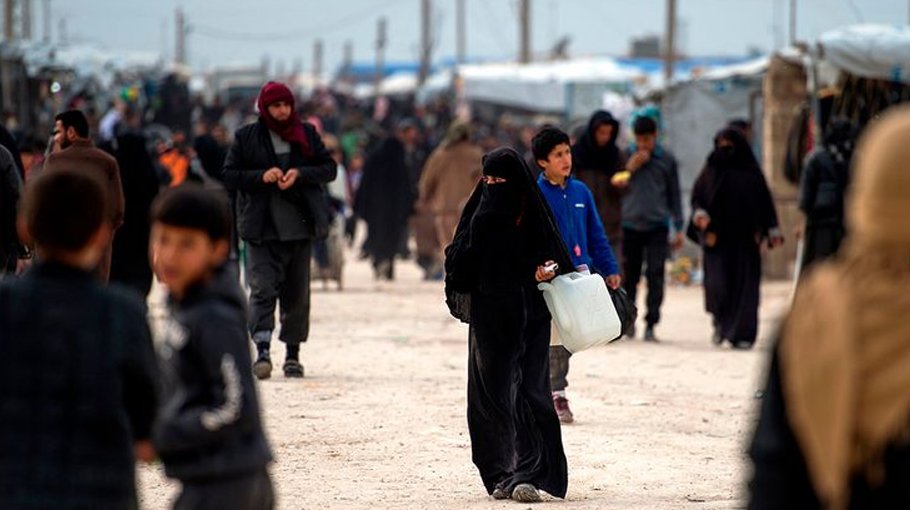World must not ignore internally displaced persons
Number of IDPs has been growing consistently throughout the world over the last 20 years

If a person is forcibly displaced by conflict and is unable to or decides not to cross the national border is not considered a refugee. The number of these conflict-forced internally displaced persons (IDPs) worldwide increases exponentially.
By the end of 2020, the total number of refugees (including Palestinians) was 26.4 million, while 48 million were IDPs. A recently released report by the Internal Displacement Monitoring Center (IDMC) puts the number of IDPs at 59.1 million by the end of 2021, out of which 53.2 million are displaced by conflict and violence.
This year, the war in Ukraine has already displaced more than 14 million people. Even though the European countries have opened their borders to Ukrainians fleeing the war, only six million have decided to leave the country. In contrast, more than eight million have opted to stay inside.
When a conflict forces people to migrate, it is a fact that many stay within their country. The world has at least more than double the number of IDPs than refugees. Still, the focus of the international community and the national political discourse has been primarily on refugees, and rarely any emphasis in policy or politics is given to the IDPs.
Numbers on the rise
The number of IDPs has been growing consistently since the Norwegian Refugee Council’s IDMC began documenting them over the last 20 years. Though a larger number of people usually get displaced by natural disasters, the people displaced by conflict and violence are of serious concern because providing them aid and assistance is not easy.
Though a larger number of people usually get displaced by natural
disasters, the people displaced by conflict and violence are of serious
concern because providing them aid and assistance is not easy
Their return process too is neither smooth, nor assured. Moreover, while more men become refugees, more women and children become IDPs. Almost half of the global IDPs are children and are at greater risk of sexual violence or being recruited as child soldiers.
Even though the IDPs are larger in number and more vulnerable, there is a lack of focus and coordination among the international agencies to help them. There are two UN agencies, the UNHCR and UNRWA, for refugees but no specialised agency for the IDPs. Though there has been some attempt in recent years to coordinate the international response to the IDP crisis, it is still very long-drawn-out and random.
Since the late 1990s, the OCHA has been expected to coordinate a collaborative response towards displaced persons among UN agencies like UNHCR, UNDP, UNICEF, IOM, and WFP. The UNHCR has assumed responsibility for protecting and supporting the IDPs, but its principal mandate is for refugees. While it struggles to get the resources to meet the needs of refugees, its responses to the IDP crisis have become half-hearted and inadequate.
There is often an impression in the global South that the camps of displaced persons run by international humanitarian agencies get better services than locals. However, a recent study of the IDP camps in sub-Saharan Africa by the World Bank shows the opposite. The service access to IDPs in the camps is much worse than what is available for the locals outside the camp.
Politically precarious
IDPs are not only highly vulnerable economically, socially, and psychologically, their situation is politically precarious compared to even refugees. They continue to live under the jurisdiction of the same regime, which is directly or its militias are, in most cases, the prime perpetrators of forcing their displacement. In other cases, the states are weak and unstable or lack proper planning and resources to protect the IDPs.
The home country continues to be the primary protector of the IDPs, and the international community’s role is only complimentary. Evidence on IDPs’ health, access to medical services, food insecurity, and malnutrition shows that in most cases, they tend to face greater challenges and hardship compared to refugees.
IDPs are undoubtedly among the most disadvantaged people in conflict-affected countries and are often not treated as well as refugees. They have few less legal and physical protection and a less certain future. Sadly, not only the international community continues to overlook the IDP crisis, but there is also minimal research and policy analysis on IDPs.
There have been dozens of research institutes and policy think tanks in the North on the refugee issues. Some more have mushroomed in Europe, particularly after the 2015 refugee crisis. But the interest in studying and analysing IDP issues is very limited and even rare.
One of the primary explanations could be that almost 99 per cent of conflict-forced IDPs lived in the global South until the end of 2021. The majority of them are in Colombia, Ethiopia, DRC, Sudan, and Syria. Thus, the North has seen the IDP crisis as someone else’s problem in faraway places, unlike refugees who have become a significant factor in their countries’ political polarisation.
The ongoing war in Ukraine has created large number of IDPs in Europe’s backyard, and that brings some hope that the international community may become serious about the global IDP crisis.
Like anyone else, the IDPs must have human rights as it is articulated by the international human rights instruments and must be protected during the conflict as per the protections provided by international humanitarian law. The international community cannot and must not continue to ignore the plight of IDPs.
Ashok Swain is a Professor of Peace and Conflict Research, at Uppsala University, Sweden. Source: Gulf News



